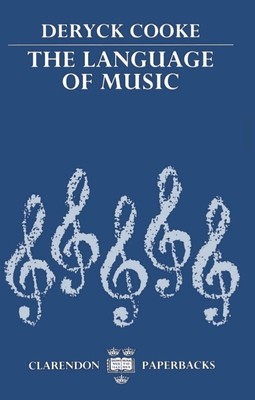
- We will send in 10–14 business days.
- Author: Deryck Cooke
- Publisher: OUP Oxford
- ISBN-10: 0198161808
- ISBN-13: 9780198161806
- Format: 13.9 x 21.6 x 1.9 cm, minkšti viršeliai
- Language: English
- SAVE -10% with code: EXTRA
Reviews
Description
First published in 1959, this original study argues that the main characteristic of music is that it expresses and evokes emotion, and that all composers whose music has a tonal basis have used the same, or closely similar, melodic phrases, harmonies, and rhythms to affect the listener in the same ways. He supports this view with hundreds of musical examples, ranging from plainsong to Stravinsky, and contends that music is a language in the specific sense that we can identify idioms and draw up a list of meanings. The book's final section analyzes two symphonies, Mozart's Fortieth and Vaughan Williams's Sixth, to explore the nature of musical inspiration and the process whereby the notes actually convey emotion from composer to listener.
EXTRA 10 % discount with code: EXTRA
The promotion ends in 23d.09:19:34
The discount code is valid when purchasing from 10 €. Discounts do not stack.
- Author: Deryck Cooke
- Publisher: OUP Oxford
- ISBN-10: 0198161808
- ISBN-13: 9780198161806
- Format: 13.9 x 21.6 x 1.9 cm, minkšti viršeliai
- Language: English English
First published in 1959, this original study argues that the main characteristic of music is that it expresses and evokes emotion, and that all composers whose music has a tonal basis have used the same, or closely similar, melodic phrases, harmonies, and rhythms to affect the listener in the same ways. He supports this view with hundreds of musical examples, ranging from plainsong to Stravinsky, and contends that music is a language in the specific sense that we can identify idioms and draw up a list of meanings. The book's final section analyzes two symphonies, Mozart's Fortieth and Vaughan Williams's Sixth, to explore the nature of musical inspiration and the process whereby the notes actually convey emotion from composer to listener.


Reviews